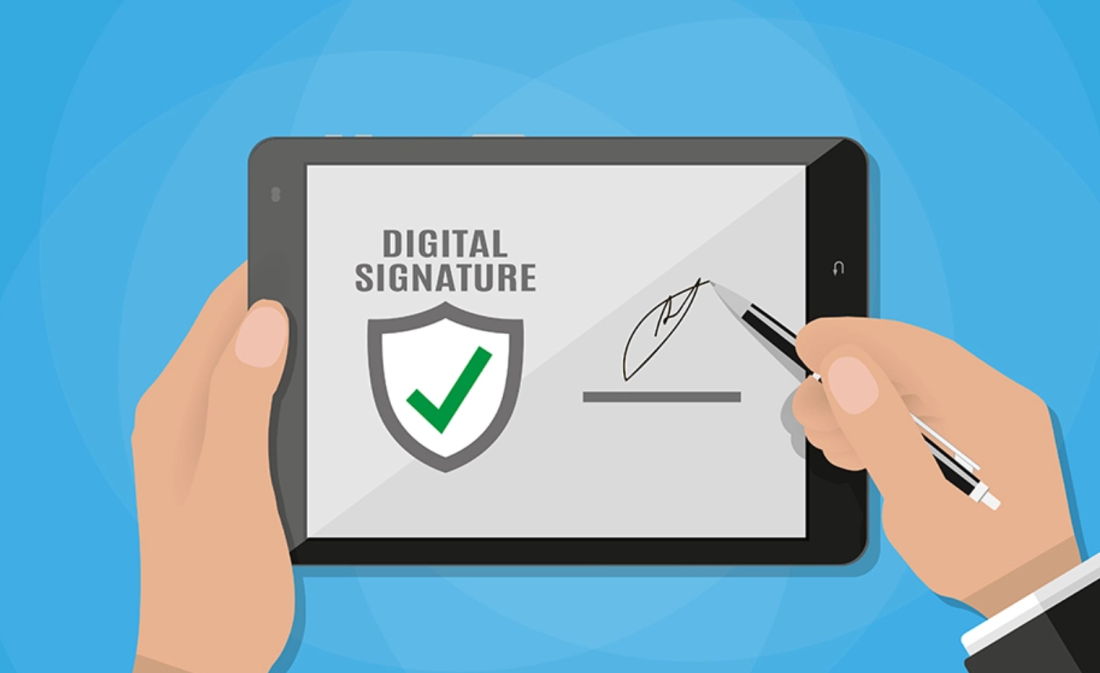Thanks to an abundance of modern, innovative technologies, it’s easier than ever to collect signatures for important paperwork. Whether you’re signing off on an important business contract or just finalizing a mortgage, eSignature software streamlines the process of getting authorizations from multiple parties – and verifying identities.
But are digital signatures truly secure? And what additional precautions should you be taking?

Digital Signatures vs. Wet Signatures
First, let’s talk about how digital signatures work, compared to traditional, “wet” signatures. When collecting a wet signature, a person typically uses a pen to sign and date a physical piece of paper. When collecting a digital signature, a person typically verifies their identify in some important way (such as logging into an account), then uses a mouse to click a button and verify that they want to add their signature to a piece of digital paperwork.
Instinctively, some people fear that their digital signature could be forged – since all it requires is a click. But in reality, traditional signatures can be forged quite easily too. And in many ways, digital signatures are less susceptible to forgery and are more secure than their “wet” counterparts.
That’s because digital signature platforms come with a host of security features and the preservation of electronic records, including:
· History of actions. Most eSignature platforms make it a point to trace a history of actions related to each piece of paperwork. They can reliably show who received the paperwork and when, who opened it and when, and who took actions on it and when.
· Timestamps. This software is also capable of taking timestamps of each significant event. It permanently records the date and time when a document was signed (along with other information).
· IP addresses. Your digital signing software will also likely capture your IP address. This way, if the validity of the signature is ever questioned, there will be an audit trail connecting the captured signature to the IP address of the signer.
· Locations. You may also be able to detect and record the physical location of the signer.
· Tamper prevention and detection. Public key infrastructure (PKI) technology makes it easy to “seal” the document after all parties have signed it. This way, the document can’t be modified or tampered with.
Identify Verification
One crucial step of the digital signature collecting process is verifying the identity of the signer. This can be done with a variety of methods, including:
· Email address. Oftentimes, digital signature technology will allow document creators to send files to recipients via email. Only the owner of the email address will have the opportunity to review the paperwork or sign it.
· SMS codes. As an added measure of security, you may require that a digital signer receives a specific verification code via SMS message – proving that the signer is connected to a specific phone number.
· Phone calls. Similarly, you can provide codes via phone call.
· Physical IDs. Some eSignature software requires signers to show some kind of government-issued photo ID to prove their identity.
· Personal passwords. Accounts and document access can also be protected with personal passwords.
· Personal knowledge. Protecting the account further, some eSignature software platforms require users to answer personal security questions, like “what was your mother’s maiden name?”
This also represents a critical vulnerability of digital signatures; if someone is able to hijack your digital identity, they may be able to sign paperwork on your behalf. In other words, if your account is compromised, or if you give your personal information to someone else, they may be able to pose as you in a digital environment.
Important Security Measures to Take
If you want to be extra cautious when using eSignature software, do the following:
· Use multi-factor authentication. Multi-factor authentication makes it extremely hard for a cybercriminal to steal someone else’s identity. Verifying identity with email and SMS text, for example, can increase your confidence in the integrity of the signatures you collect.
· Review your information closely. Always make sure you’ve gathered and provided information correctly; a single wrong digit in a phone number is all it takes to compromise the security of your operation.
· Keep your credentials secure. Choose strong passwords when creating accounts, and encourage other users to do the same. Never give your account information or personal details to anyone.
The Bottom Line: Are Digital Signatures Secure?
As it stands, digital signatures aren’t just secure; they’re even more secure than traditional signatures in most contexts and settings (as long as you’re using reliable eSignature software).
However, there’s no such thing as a foolproof signature system. If you want to ensure that your signatures, and the signatures of your partners, remain secure, you’ll need to invest in your own personal security – and keep your passwords and personal information safe.


